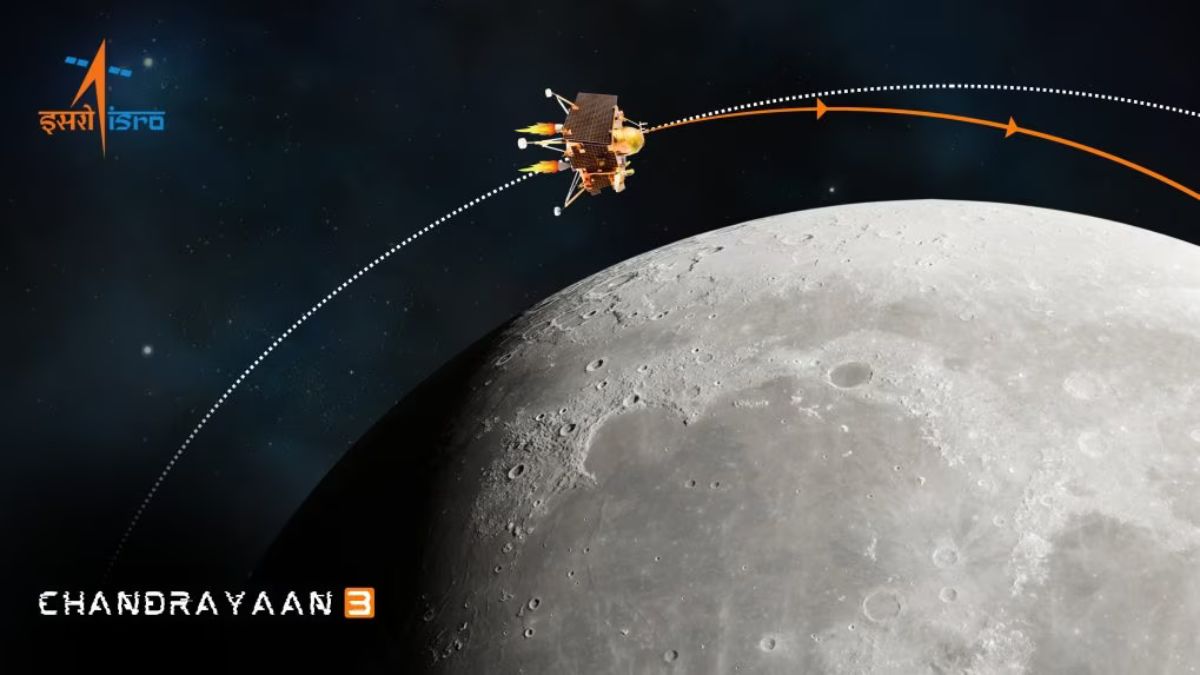India’s Moon mission Chandrayaan-3 is all set to enter its final phase today leaving a gazillion Indians glued to their TV screens. It is anticipated to touchdown the lunar surface at 6:04pm. The mission is progressing in line with the predefined schedule, according to the Indian Space Research Organization (ISRO) and it live broadcast shall commence from 5:20pm today.
The fact that in case the Lander successfully accomplishes a soft landing on the southern pole of the moon, then India will be the maiden and only nation so far to achieve this commendable feat. Following this, the rover, designed for mobility on the moon’s terrain will come out of the Lander.
Why Is Chandrayaan-3 Landing On The Moon’s South Pole?
ISRO ierates three primary objectives of the Chandrayaan-3 mission. The first fundamental aspect is to showcase a safe and smooth landing on the moon’s surface. Secondly, to demonstrate the rover’s movement on the moon. The final aim is to conduct on-site scientific experiments.
Soft landing implies descent at a controlled speed, ensuring the safety of the spacecraft with a gradual touchdown. A scientist of NASA’s Mars rover mission, Amitabha Ghosh, elucidated the term really well in a way that the layman could comprehend. He said that when a spacecraft is moving at a speed equivalent to 10 times that of an airplane, and has to make a gentle landing on the Earth’s surface within a specified duration and without any human assistance, it refers to as a soft landing. This speaks volumes about the technical prowess of the spacecraft. The landing site for Chandrayaan-3 is near the moon’s Southern pole at 70 degree latitude.
Earlier missions to the moon have made their landing near the Moon’s Equator, owing to the geographical conductivity and temperature appropriateness of the region. This ensure a prolonged and stable operation of insturments that drive safer and easier landing. Moreover, the region has abundant sunlight which provide energy to solar-poweres instruments for optimal functioning.
On the contrary, the polar regions of the moon lack sunlight, are completely dark and have unformidable weather conditions with temperatures below 230 degree Celsius. This obstructs proper functioning of insturments. Additionally the region is filled with huge craters all over the place which make the mission more challenging.
Requirements For Chandrayaan-3 To Succefully Land On The Moon
The Chandrayaan-3 Lander will need to convert from its high-speed horizontal position to a vertical one in order to facilitate a gentle descent on the surface on August 23 as it enters the final 15 minutes of its attempt to make a soft landing on the Moon. It will do so in four phase listed below:
- Rough Braking Phase: The Lander will have to reduce its horizontal velocity from 1.68km/sec at 30km height to almost zero to ensure a soft and safe landing on the moon. This necessitates extreme precision.
- Attitude Hold Phase: At 7.42 km from the moon’s surface, the lander, which is in the horizontal position, will get into a vertical position while covering a 3.48km height.
- Fine Breaking Phase: This will last for a durarion of 175 seconds and in this the Lander will get into a completely vertical position. The final 28.52 km will be traversed in this phaseand the altitude will descent to 800-1000m. The speed will reduce to 0m/sec.
The Chandrayaan-2, launched in 2009, had lost control and crash landed between the “attitude hold phase” and the “fine braking phase”.
- Terminal Descent: This is the final stage where the aircraft will vertically descend onto the moon’s surface.
What Happens After The Chandrayaan-3 Landing?
Spacecrafts frequently carry payloads to monitor and record events in space. Scientists on Earth then receive this information to assess and investigate. In order to examine lunar quakes, lunar surface thermal characteristics, changes in the plasma near the surface, and a passive experiment to assist in precisely calculating the distance between Earth and the Moon, the lander will have four scientific payloads. The fourth payload is provided by NASA.
The Rover has two payloads that are intended to analyse the chemical and mineral composition of the lunar surface and to identify the proportions of elements like magnesium, aluminium, and iron in the rocks and soil of the moon.
Read | ISRO Keeps a Close Watch on Lunar Orbit Traffic As Chandrayaan-3’s Vikram Prepares to Land


